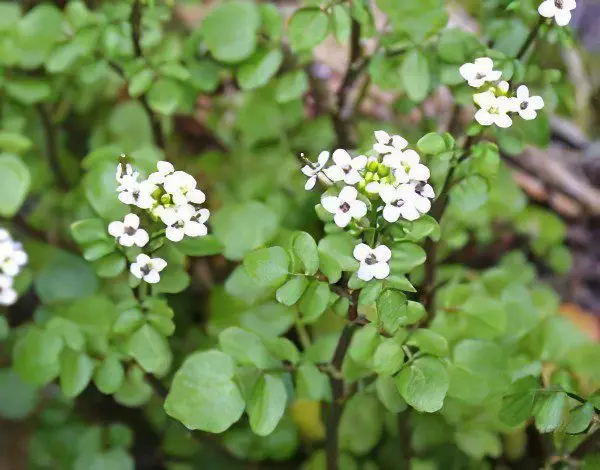Contents
Useful properties and recipes for the use of watercress officinalis
Botanical characteristics of watercress

Watercress officinalis is a perennial plant with a hollow, reclining stem at the base. The plant has long roots and a powerful root system. Straight and dissected leaves are located opposite each other. white medium-sized flowers are collected in inflorescences-brushes. The fruit of the watercress is a long pod, inside of which there are many seeds. Throughout the summer period, you can observe the beautiful flowering of this medicinal plant. Watercress is found in Europe, the Crimea, the Caucasus and Central Asia. Since the plant loves moisture very much, it grows on the banks of rivers and reservoirs, in swamps and in stagnant waters.
Cultivation of watercress
Watercress is grown on the banks of such reservoirs that do not freeze, with a water temperature of 10-12 ° C. To plant watercress, you need to make a ditch in advance with a depth of 50 cm. Compost or humus is poured into the bottom of the ditch. At the end of summer, the prepared cuttings should be planted in an inclined position in a dug ditch. Then the ditch with the cutting is filled with water in such a way that the tops of the shoots peek out above the surface of the water. As rooting, you need to add water to the ditch. Before the onset of winter time, it is necessary to roll, but lightly, watercress plants with the help of a special rink (this is necessary so that the plants spend the winter completely in the water).
Watercress is grown not only by cuttings, but also by seedlings. To do this, in July, seeds are sown in a prepared greenhouse. During the period of seed germination, it is necessary to regularly water the soil, not forgetting to remove the weeds that have appeared. Planting seedlings is no different from planting cuttings.
Useful properties and application of watercress
The watercress contains many useful substances, namely: iron, essential oil, calcium, iodine, vitamin E and phosphorus. Watercress has a diuretic, antiscorbutic and antiseptic effect, and this plant also cleanses the blood of toxins.
Due to the huge variety of substances contained in watercress, it is used for various skin diseases. Watercress helps to cure severe bronchitis, which is accompanied by sputum with pus.
Watercress officinalis is used in the treatment of acute and chronic nephritis, anemia and scurvy. And an ointment made from fresh watercress juice and butter removes warts, wen and heals burns. To strengthen the gums, watercress juice helps, which need to be brushed every day 3 times.
General weakness can also be removed with the help of a drug from watercress. Constipation is a very common problem for children and adults, which will also help get rid of watercress.
Watercress Recipes

Watercress is used in the form of ointments, decoctions, infusions, and even the fresh juice of the plant is a very good remedy.
Ointment of watercress for burns. We take fresh watercress juice in the amount of four tablespoons and mix it with 100 grams of butter. Oil and juice must be mixed very carefully to get a beautiful homogeneous mass-ointment. This ointment is applied to the burns several times a day.
Decoction of watercress. Take 20 grams of fresh watercress and pour 500 ml of boiling water over them, put on fire for 5 minutes, then strain and cool. Take a ready-made broth before meals, 200 ml 3 times a day. Indications for the use of this decoction are the following diseases: anemia, cancer, urolithiasis, diabetes mellitus and thyroid disease.
Infusion of watercress leaves. Preparing this infusion is easy. To do this, take 30 grams of leaves and pour 1 liter of boiling water. Let it brew for 3 hours, then filter. Such an infusion is taken for skin diseases, 200 ml twice a day.
Fresh watercress juice. Taking fresh watercress, juice is squeezed out of it. It is necessary to take watercress juice for urolithiasis, jaundice, cholelithiasis and as a laxative. A single dose of watercress juice is 1 teaspoon. Do not drink juice more than three times a day.
Contraindications to the use of watercress
Fresh watercress juice should be used only in the right doses. With increased doses of taking drugs from this plant, signs of irritation of the mucous membrane of the kidneys and stomach may appear. Unfortunately, at the moment, very few folk medicines are being prepared from this plant, because the watercress is very difficult to find. Therefore, no side effects or contraindications were found.









